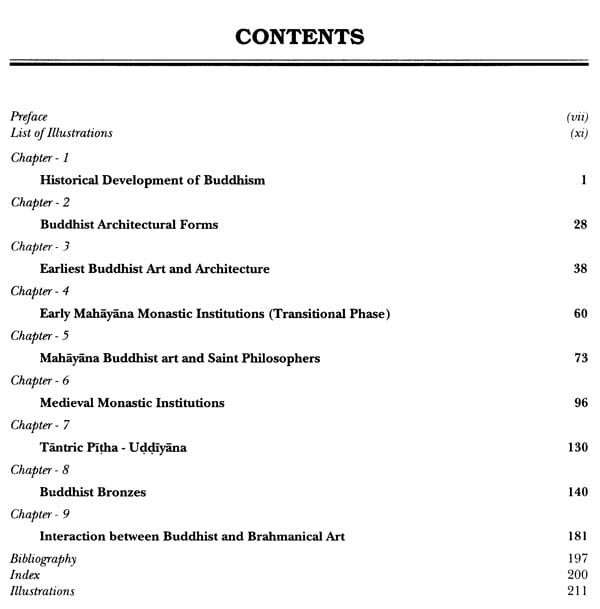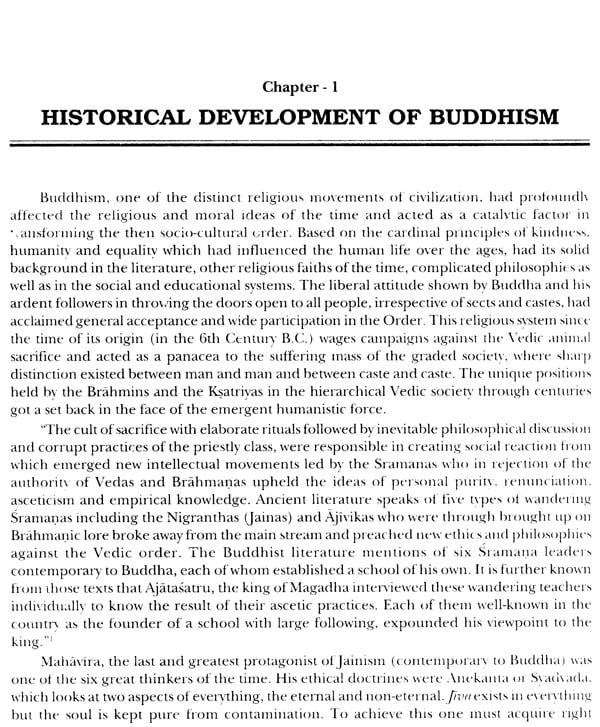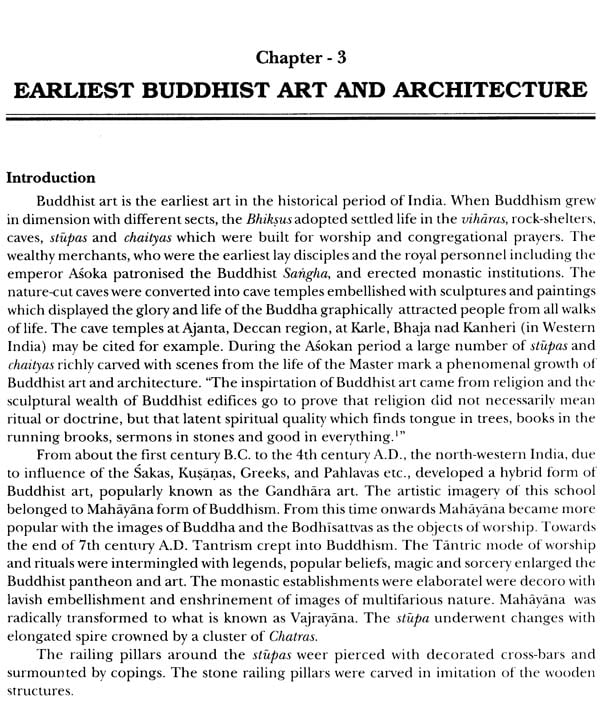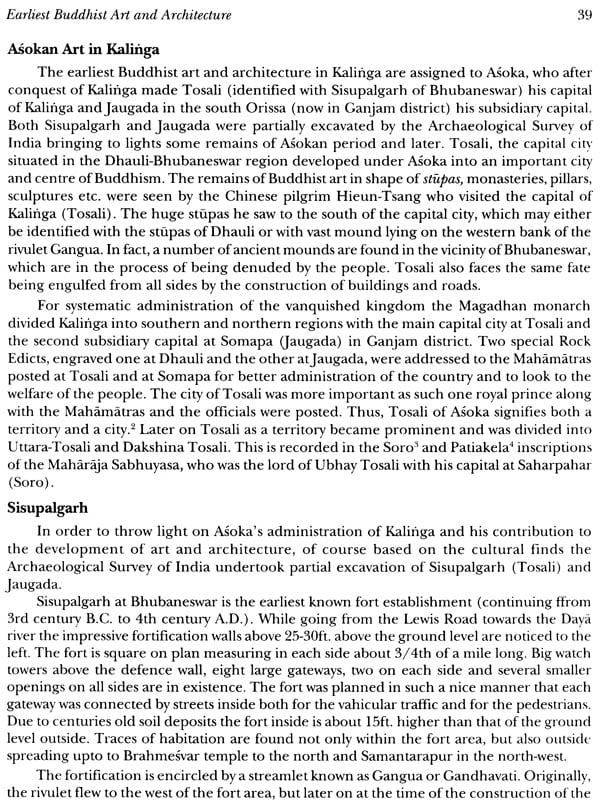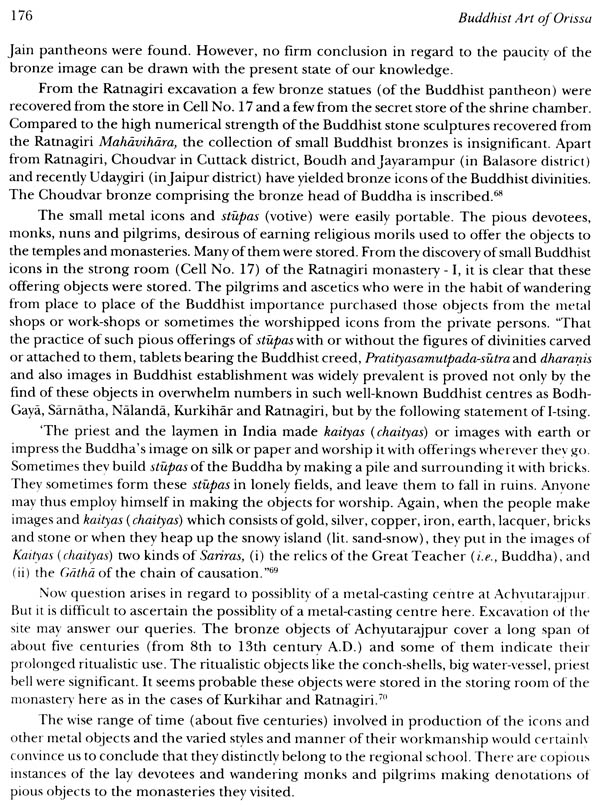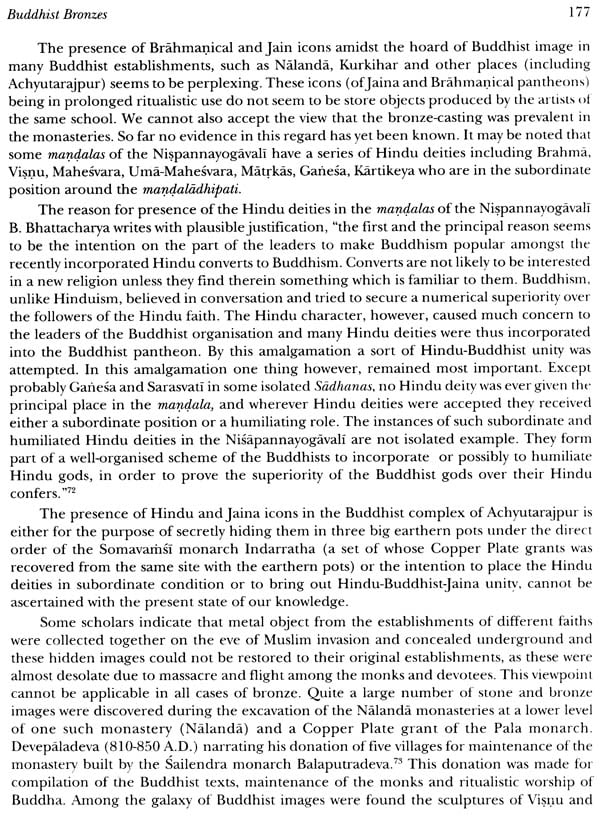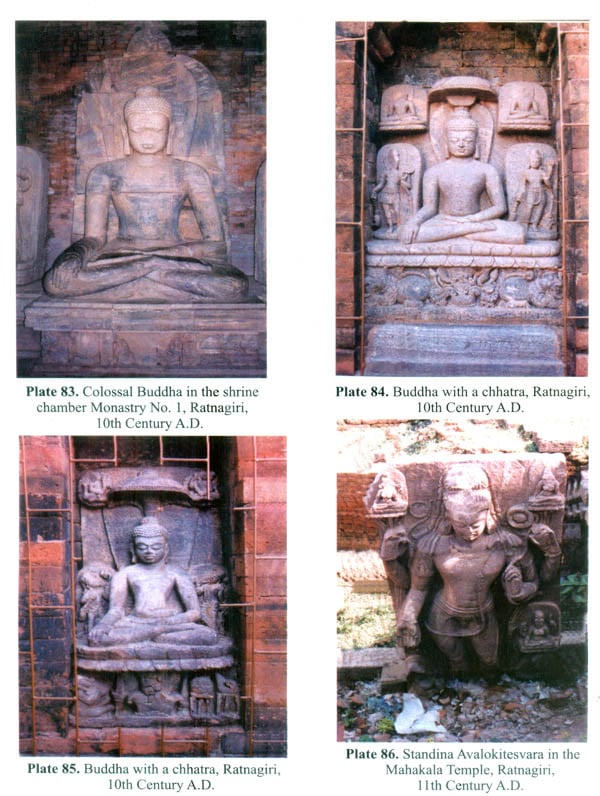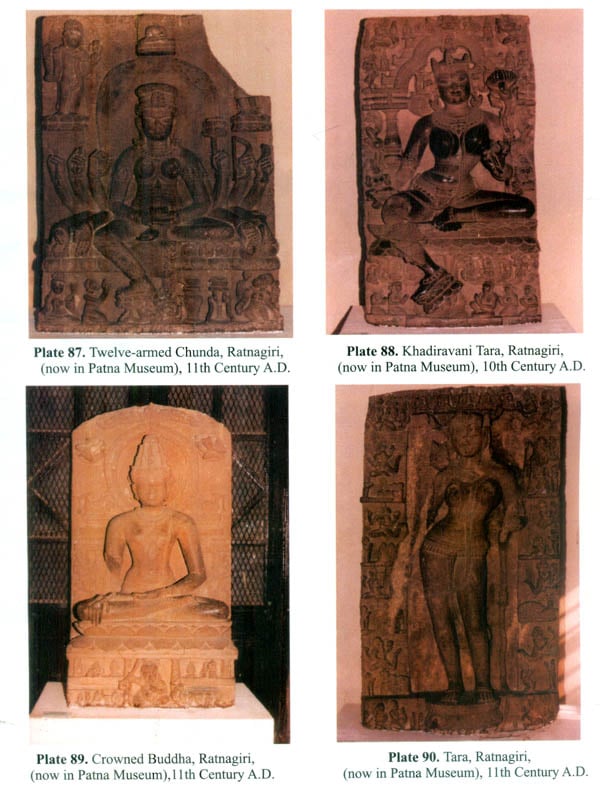
Buddhist Art of Orissa
Book Specification
| Item Code: | NAY702 |
| Author: | H.C. Das |
| Publisher: | Pratibha Prakashan, Delhi |
| Language: | English |
| Edition: | 2012 |
| ISBN: | 9788177022698 |
| Pages: | 250 (Throughout Color and B/w Illustrations) |
| Cover: | HARDCOVER |
| Other Details | 11.00 X 9.00 inch |
| Weight | 1.04 kg |
Book Description
Based on the cardinal principles of kindness, humanity and equality the popular faith had built up solid background in literature, philosophy, art and architecture, Iconography as well as in social and educational systems. The liberal religion threw its door open to the people irrespective of sects and castes and found general acceptance in the society. The vast mass of art and architecture built up during a span of about 1500 years (from the time of the Buddha till about 1Oth/ 11th century A.D.). In India and simultaneously in several Asian countries not only attracted the converted Buddhists and general mass but also became the eminent centers of pilgrimage.
Buddhist art being the earliest art in historic India greatly influenced its art heritage.
Architect and artist groups being the same, their style of execution was more or less similar though the art idiom and iconographic features differed from pantheon to pantheon.
The book 'Buddhist Art of Orissa' presents in lucid style the Buddhist art and architecture of the State that emerged and developed here from the time of Ashok (3rd century B.C.) till about 11th century A.D. showing the gradual evolution of peculiar Mahayanic and Vajrayanic sculptures, bronze icons of typical varieties with exquisite workmanship and magnificent monastic; institutions, colossal stupas enshrined with befitting icons.
Buddhist art is not an isolated phenomenon. It flourished simultaneously with other forms of art maintaining close liaison and interaction with them, despite the sectarian rivalry, jealousy, intolerance etc. in one chapter of this book the interaction between Brahman cal and Buddhist icons has been dearly elucidated. Field data based on thorough survey of the Buddhist sites, excavated materials and the museums and analyzed in relation to textual references will be stimulating and informative to the scholars and even to general readers.
He is a historian of high reputation with specialized aptitude to ancient Indian history and archaeology trained under the guidance of eminent archaeologist Padmashri P. Acharya, historian K. . . Mohapatra, Epigraphist Padmashree S. . . Raja guru and internationally acclaimed historian Dr. M.N. Das, former Professor of History and Vice-chancellor of Utkal University. As a Musicologist of the country he played a vital role in Museum Movement of India. He has vast and wide experience in survey of almost all important archaeological and historical sites of the State and important sites of India, in survey and exploration of ancient port sites from Talmud (West Bengal) to Baruah (Andhra Pradesh) and ancient and medieval forts of Orissa. His long experience and expertise are well nigh reflected in his several books and many research papers.
His laudable contribution to the scholarly world lies in publication of a series of books on religion, history, martial tradition, tribal culture, art and architecture and a large number of edited volumes (titles of which are given in this book). He is one of the editors of Orissa Historical Research Journal, published by the Orissa State Museum, Bhubaneswar. To his credit he has published as many as 850 research papers on the above noted subjects in Indian and international journal. Seven scholars in history including an Italian scholar have been awarded Ph.D. degree under his guidance and supervision.
At present he is engaged in study of Jain an Art, Erotic Art and Fauna Imagery in the Temples.
I extend my deep sense of gratitude and thanks to the Indian Council of Historical Research for providing financial support in shape of a senior Fellowship. I am beholden at the unstinted help and assistance of Dr. J.K. Patnaik, Archaeologist of A.S.I. Bhubaneswar Circle in providing me a lot of archaeological data, several photographs and reference media available in the A.S.I. Library. I cannot forget the help and assistance of Dr. Balaram Tripathy, Archaeologist in typing the corrected version of the book with zeal and sincerity. I am extremely grateful to Sri M.K. Samal, Librarian of the Orissa State Museum for providing me the Museum Library facilities and helping in preparation of the manuscript of the book. My sincere thanks are due to Sri Sushanta Kumar Patanaik, Photographer, and Orissa State Museum for preparing a large number of photographs of Buddhist monuments and sculptures which have found place in the book. I am grateful to Sri Chittaranjan Dash of the Miss Comp track, Old Town, Bhubaneswar for typing the entire manuscript. Last but not the least, I am extremely thankful to Dr. R.S. Shukla, proprietor Ms. Pratibha Prakashan, Delhi for publishing the book in record time.
I hope, the book will be of some help to the archaeologists, historians, the Art historians and students of Ancient Indian History, Culture and Archeology. I crave the indulgence of scholars for any omissions and commissions.
Book's Contents and Sample Pages
